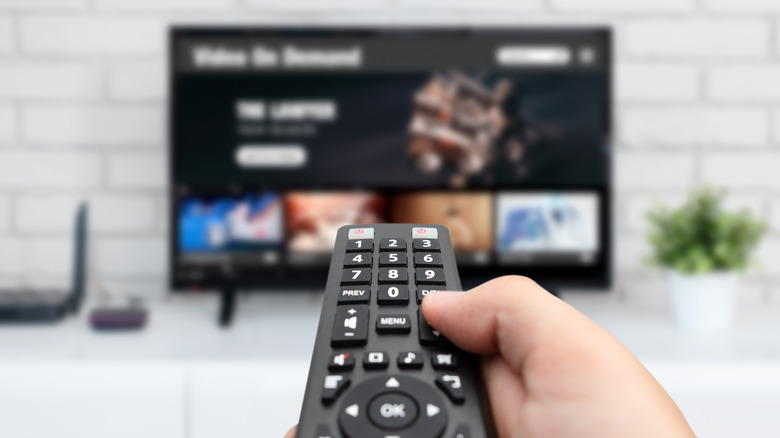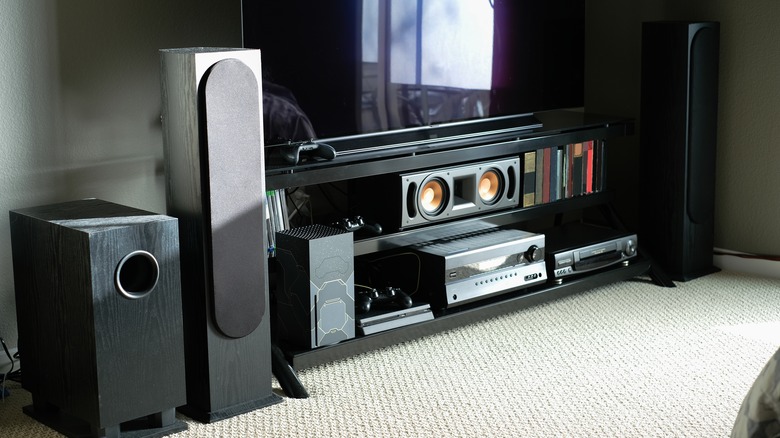Hard To Understand Movie Dialogue? Here Are 3 Overlooked Sound Settings That Can Help
"I can't hear without my subtitles." It doesn't sound like it should make sense, but to many of us who watch movies and TV shows, it's perfectly coherent. It's so relatable that it has become a viral meme.
We've previously unpacked some of the technical reasons why movie dialogue has become more difficult to understand in recent years. Without subtitles, dialogue is often muffled, downright incomprehensible, or overshadowed by background music, no matter how high you turn the volume up. The major reason why this happens is that movie audio is mainly mixed and optimized for movie theaters, so the sound dynamics don't always translate well for home viewing.
But the blame doesn't only lie with movie producers or sound designers — audio quality also boils down to the kind of device you're watching and/or listening to movie audio. But the good news is you can do something about it. We have some technically sound advice for tweaks you can make to your device's sound settings to significantly improve the quality of audio output. We'll focus on the most common devices — TVs, soundbars, and headphones — and which dials to tinker with on each of them to get the best possible audio.
Tweak these sound settings to improve movie dialogue on TV
TV audio is usually terrible because modern models have frames too thin to house solid speakers, but most of them come with different "sound modes" which are presets you can choose or adjust to deliver the clearest dialogue audio. Open your TV settings menu and look for the audio section — it might be named "Sound" or something similar. Most TVs have presets named Movie, User, and Standard, with the latter being the default. The results of each may vary depending on your TV type, so you might need to sample each mode to see which one delivers the most audible output.
If none of the presets do the job, you may try tinkering with your TV's equalizer settings. Don't be intimidated if your model displays a graph with a gazillion dials — all you need to do is lower the bass (that takes out the muffling boom) and turn up the treble (which is part of the acoustic spectrum where speech usually falls). To boot, disable any built-in audio enhancements settings like Bass Boost or Surround Sound, and you should have audio you can hear better.
Also, look for a feature called "Dynamic Range Compression" or "Night Mode" and turn it on — the setting is supposed to even out the range between the loudest and quietest sounds and it might improve dialogue audio quality on your TV.
Tweak these sound settings to improve movie dialogue output on your soundbar
External speakers usually sound better than the TV's built-in set. Still, their default settings may leave you with muffled or incomprehensible dialogue audio. Luckily, most soundbar models also come with speech-enhancing presets like the Movie or Standard modes we discussed for TVs earlier. You should be able to switch between modes at the tap of a button, and again, you might need to test run a few to figure out which best amplifies dialogue audio output.
If your soundbar has a subwoofer, there's a high chance that your output is bassy and low-pitched, thus amplifying boomy sounds and making it difficult to hear the dialogue. The simple fix — if you have a remote control that allows specific sound adjustments — is to turn down the bass on your sub, then amp up the treble a few notches.
Also, turn on and try out custom Dynamic Range Compression features like Speech Enhancement, Clear Voice, or Night Sound settings if your soundbar model has them — the best soundbar brands usually do. It's important to mention that DRC, on many models, is still an imperfect effect because it tends to amplify other sounds in the frequency range of speech. But it might still deliver clearer dialogue audio compared to when it is off.
Tweak these sound settings to improve movie dialogue output on home theater systems
Home theater systems typically deliver a more balanced audio output than TV speakers or soundbars. But if yours isn't doing movie dialogue any favors, there's a simple way to fix it. All you need to do is turn up the volume of the center speaker channel higher than the other speakers to boost voice/dialogue output. Home theaters are designed in a way that different speaker channels cater to separate sound frequencies and center speakers are equipped for mid to low-range frequencies, which is where dialogue falls on the spectrum.
Another key factor that could make or break your home theater's output is speaker placement. Case in point, center speakers are very directional, so you might end up with unintelligible audio if they are positioned lower than the ear level. Make sure your center speaker is placed such that it delivers audio output at your ear level when seated.
It's also important to mention that poor-quality speakers will deliver shabby audio no matter how much tweaking you do, so the ultimate fix might be to get better ones. We have a guide to the best home theater systems if you're having trouble choosing. With solid speakers and the settings mentioned above, you should bid adios to bad audio in no time.



